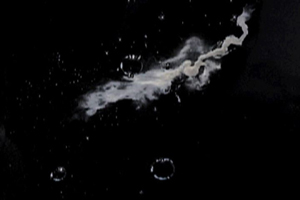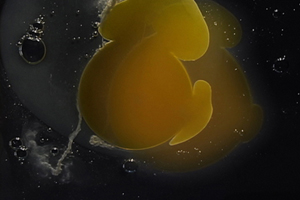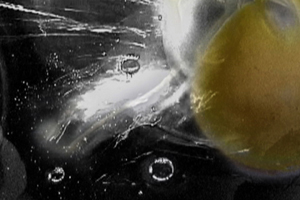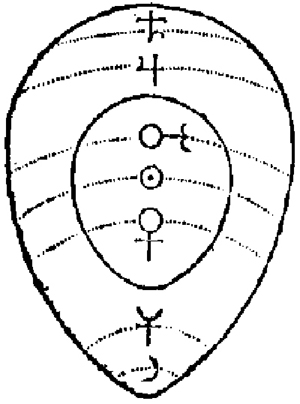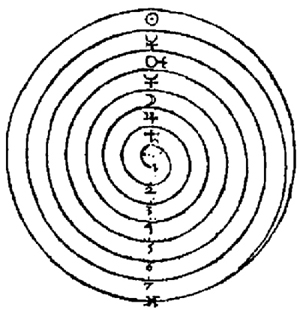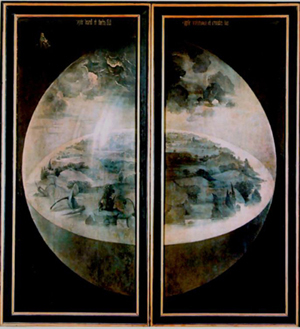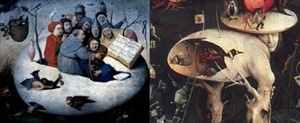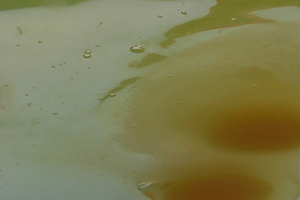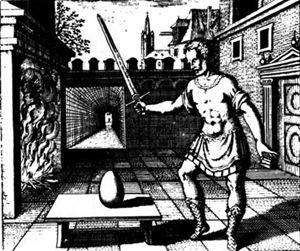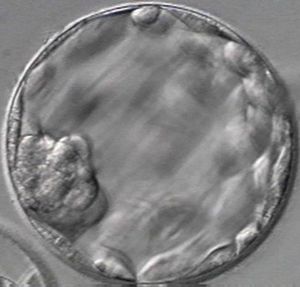© samantha krukowski
Chalazae
2003
text from a talk given at the Society for Literature, Science and the Arts
Conference, 2003 |
|
| When I was eight, I called this the “thingy.”
It is more formally known as the chalazae, the anchor that holds down the
yolk membrane and keeps the yolk and white of an egg separate. Throughout
my childhood, I refused to eat any egg that still had a thingy. My mother
obliged me and removed the thingies of all the eggs she managed to feed
me. I was convinced that the thingy (the chalazae) was a baby chicken, or
at least the starting point for one. My mother took me to her biology lab
a lot, and there were always eggs and chickens in various stages of development.
I saw chicken embryos on yolks and thingies nearby. That was enough to empower
the chalazae and invest in it a series of meanings and capacities that were
largely imagined. |
|
| An egg is an oval filled with both fat (the yolk) and water
(the white), opposites that coexist within the confines of an eggshell.
Cooking can render an egg dense, light, brittle, rich. Together the yolks
and whites of an egg provide protein, fat, moisture and substance; separately
they work culinary alchemy by binding, lightening, coloring and flavoring
other ingredients. |
|
The egg is a common alchemical symbol. The retort, the alchemists’
bulb-shaped vessel, was called the Philosopher’s egg. It was used
for gentle distillation and cohobation and could be hermetically sealed,
so that the various materials inside could incubate.
The egg was, more importantly, perceived as an image of the universe, the
macrocosmos. |
|
| John Dee, a British alchemist and mathematician who wrote
the Monas hieroglyphica in 1564, wrote about the monad (unity) underlying
the universe as expressed in a hieroglyph or symbol. He connected the symbol
of the monad to the process of alchemical transmutation and found elements
of transformation arranged along orbital lines in the egg, according to
the corresponding placement of their ruling planets. He delineated the egg
into a central “yolk” made up of the Sun, Mars and Venus (the
metals gold, iron and copper) and a “white” made up of Jupiter,
Saturn, Luna and Mercury (the metals tin, lead, silver and quicksilver)…Material
tranformation took place when the “yolk” enveloped the “white”
through a process of “rotation.” |
|
| Dee further symbolized this process with a spiral derived
from Arabic alchemy, where “turning the screw” was used to describe
transformation. The spiral described and contained circles, and the circle
was conceived as a hermetically sealed space in which transformation could
take place. |
|
| The circle was, for Dee and other alchemists, a symbol of
original perfection. It was associated with the sphere, the egg and the
rotundum—the “round” of alchemy. The circle, sphere and
round were all aspects of the self-contained. When closed, Heironymous Bosch’s
panel painting, The Garden of Earthly Delights, offers an image of this
formal alliance. The circle is without beginning and end, in its roundness
there is no before and no after, no time, no above and no below, no space. |
|
| Egg imagery is pervasive in Bosch’s painting. The egg
was considered part of a binary pair, egg and sperm, which was associated
with the pair of sun and moon. The philosopher’s egg was the birthplace
of and the container for the union of opposites, male and female. Inside,
a third thing was born of these opposites, and emerged when the vessel was
opened or cracked. |
|
A few months ago, I trained my video camera on some glass.
I positioned my camera below the glass, and began to crack eggs onto it.
Some of the eggs were frozen, like this one. Some of the yolks broke, some
stayed intact. While working on the video, I recalled some writing by Simone
de Beauvoir:
“With her fire going, woman becomes a sorceress;
by a simple movement, as in beating eggs or through the magic of fire, she
effects the transmutation of substances...” |
| |
| Michael Maier’s, a German alchemist, wrote in his Scrutinium
Chymicum of 1687: “Learn about the egg and cut it with a flaming sword.
In our world there is a bird more sublime than all others. To search for
his egg be thy only concern. The egg of alchemy is a symbol for magical
realization.” |
|
| There is something in these alchemical descriptions that
parallels the process of embryogenesis, which metaphorically might be considered
the birthplace of all works. The blastocyst is a universal subanimal formed
by simple cell division, a volvox-like ball. Its organization is ancient,
primary, and panspecific, affecting all eggs in much the same way. Regardless
of their ultimate destiny, the component cells of a blastocyst first arrange
themselves in a hive of sibling balls, a mold from which individual animals
can be shaped. Blastulation is a cosmic event…it denotes the creation
of primal matter—an ushering of one into many, unity into multiplicity,
timelessness into time, inertia into mutability, information into form. |
